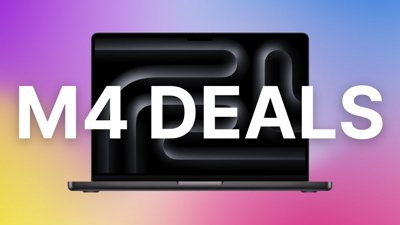Thinka on Tuesday took the wraps off the first Z-Wave hub for HomeKit, bringing support for more than 3,300 new accessories to Apple's smart home platform.
The new Apple-certified Thinka Z-Wave is a simple hub that allows many Z-Wave accessories to work with HomeKit for the first time. This includes smart switches, thermostats, dimmers, doorbells, speakers, curtains, fans, dimmers and various sensors from over 600 different brands.
"90% of all HomeKit accessories are based on WiFi or Bluetooth, which, unlike the Z-wave protocol, are not optimized for home automation," said Thinka founder and CEO Michael Franken. "Z-Wave offers a full range of over 3,000 smart home products, so by unlocking Z-Wave for HomeKit, Thinka brings the best of two worlds together"
Unlike Wi-Fi and Bluetooth, Z-Wave was designed for smart home automation and has existed far longer than the emerging Thread standard. It is optimized for range and is extremely power efficient. Thinka touts Z-Wave as the protocol with the largest product range, and now those devices will work with HomeKit.
Prior to the Z-Wave hub, Thinka's first product was a KNX hub that works with HomeKit.
The Amsterdam-based company is launching the Thinka Z-Wave in Europe for 429 euros before coming to the United States next year.
 Andrew O'Hara
Andrew O'Hara









 Christine McKee
Christine McKee
 Malcolm Owen
Malcolm Owen

 William Gallagher
William Gallagher
 Chip Loder
Chip Loder
 Brian Patterson
Brian Patterson

 Wesley Hilliard
Wesley Hilliard


-m.jpg)






11 Comments
There is a short comparison of Z-Wave to other protocols on wikipedia:
4.5 Comparison to other protocols
There are also longer comparisons on other websites:
https://www.electropages.com/blog/2019/02/smart-homes-explained-smart-home-protocol <--
https://www.tomsguide.com/us/smart-home-wireless-network-primer,news-21085.html <--
https://www.anixter.com/en_us/resources/literature/techbriefs/comparing-wireless-communication-protocols.html <--
I've been unhappy with the reliability of Zigbee (although last month I finally got it working perfectly by assigning a fixed IP to my Hue Hub) so I'm using the above links to decide which protocol I want to use.
I think this new Z-Wave Hub for Homekit is an excellent option for people who are already invested in Z-Wave products. But I'm not sure if that's the protocol I would pick if I were building a new network. Everyone has different requirements, and therefore choose different solutions. The most popular requirements seem to be:
This is huge. Z wave existed long before HomeKit and there’s a huge installed base of z wave devices. Up until now, if you wanted to switch to HomeKit, you were required to dump your entire inventory of devices and start from scratch. This would cost hundreds to even thousands of dollars, a rather difficult proposition to make. In addition, the number of HomeKit devices is still quite limited and there’s not a lot of choice. Opening up the z wave market increases the possibilities. Of course, 430€ is a hefty sum to shell out just for a bridge, too.
Seems like it is coming to the U.S. next year. I would not spend $500 for a hub when you have Wi-Fi already in your home. Maybe Amazon Alexa for $29.00?
At this astronomical price it’s cheaper for me to rip out my legacy ZWave devices and replace them with HomeKit ones, than try to keep them on life support and deal with the idiosyncrasies of yet another hub (I already have Homebridge running on a Raspberry Pi, Philips Hue, Caseta, Ikea Tradfri, Aqara, a Sonoff Zigbee gateway… way too many tiny boxes that use up an Ethernet port and a power outlet, it’s maddening.